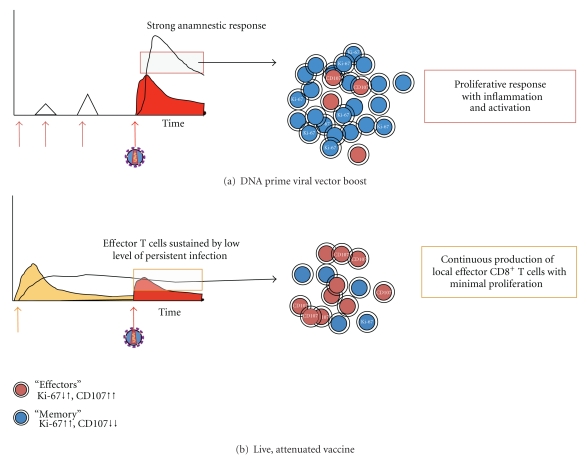Figure 1.
Hypothetical model for distinct CTL response depending on the immunization strategy. (a) and (b) graphs depict both CTL response and viremia (y-axes) over time (x-axes). Time (x-axes) includes the period of immunization and the period of infection after pathogenic challenge (bright red arrow with virus illustration). A DNA prime viral vector boost strategy (a) induces blips of CTL response after each immunization (with an associated memory response). Upon pathogenic challenge, this strategy generates a strong anamnestic response that has greater memory than effector CD8+ T-cell component, which will enhance the proliferative response and the associated inflammation and immune activation. In contrast, a live, attenuated vaccine (b) generates persistent CTL response coupled to vaccine virus replication. The continuous production of effector CD8+ T cells is sustained by low level of persistent infection in different tissues, including the mucosa. At the time of virus challenge, the presence of local effector CTLs is capable of controlling the initial focus of viral replication with minimal proliferation, since these cells have more cytotoxic than proliferative potential.

